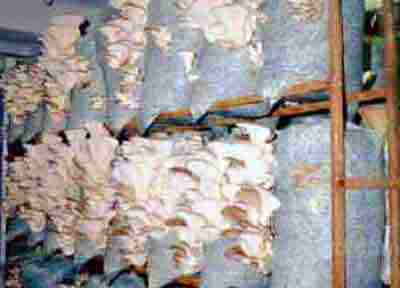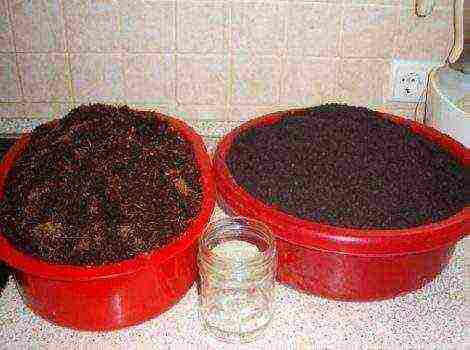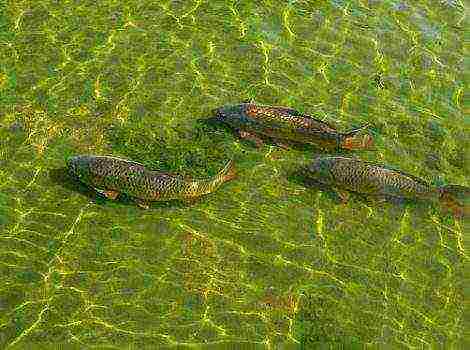Content

If a plant such as a pike tail is purchased, home care will be easy. This home flower is also called sanservieria, but people often do not remember this name. This plant is very popular. You need to properly look after him and create the necessary conditions for growth and development.
Popular varieties
The pike tail plant has such a Latin name - sansevieria trifasciata. The genus Sansevieria belongs to the Agave family. The pike tail is a frequent inhabitant of various houses and apartments. Differs in unpretentiousness and endurance. He is not afraid of drafts, irregular watering, drought. The flower can even grow in partial shade. He doesn't need frequent transplants.
Among florists, it is valued for its decorative properties. Variegated long leaves adorn any interior. It can be used to create compositions with other varieties. It does not have a stem, only leaf rosettes.
In the wild, the plant can be found in Indonesia, India, Africa, Madagascar. The flower has many other names: Indian sword, cuckoo tail, leopard lily.
Sansevieria is an ornamental leafy plant, but it can produce a peduncle. The inflorescences do not differ in decorativeness, and they appear extremely rarely, only if you create stressful conditions for the flower. But this does not mean that for flowering it is not supposed to follow the rules for keeping a pike tail. The difference between the inflorescences is a pleasant aroma with vanilla notes. The flowers are very small, have a whitish-greenish tint, open only in the evening, and a drop of nectar appears on them. Flowering lasts a long time.

Pike tail or cylindrical sansivieria
There are 2 main types of pike tail. The first group includes those plants that have lanceolate leaves. They are erect. They can even reach a height of 150 cm. The second group includes those flowers, the foliage of which creates rosettes as it grows. These varieties are characterized by low growth. Both groups are characterized by a high density of foliage. The leaves themselves begin to form from the root.
For information
At the moment, more than 60 varieties of sansevieria are known. They differ in appearance:
- Sansevieria Laurenti... Also called the Lawrence variety. The leaves are long and narrow, their height reaches 150 cm. They have stripes of a yellow hue, which are bordered by all the leaves.
- Hanni... Another well-known variety that is very popular. Sansevieria Hanni variety is distinguished by the presence of lush leaf rosettes. They can reach a height of no more than 20 cm. Hanni has an ornament on each sheet in the form of a light strip, which is located transversely.
- Sansevieria Francis... The foliage of this variety has a rough surface. The leaves are arranged in 5 rows. The stem is very tall at first, and then it begins to creep. The height of the leaves is no more than 15 cm.
- Sansevieria prolific... Rosettes can be from 30 to 60 cm in height. They have a deep dark green tint at the base. The shape is cylindrical, the upper part is sharp.
- Sansevieria large... The rosette can reach a height of 60 cm. The leaves are ovoid. They are about 15 cm wide. The color is light green, but there are dark stripes that are located transversely and turn into a reddish border.
These are only the most popular, but there are many other types.
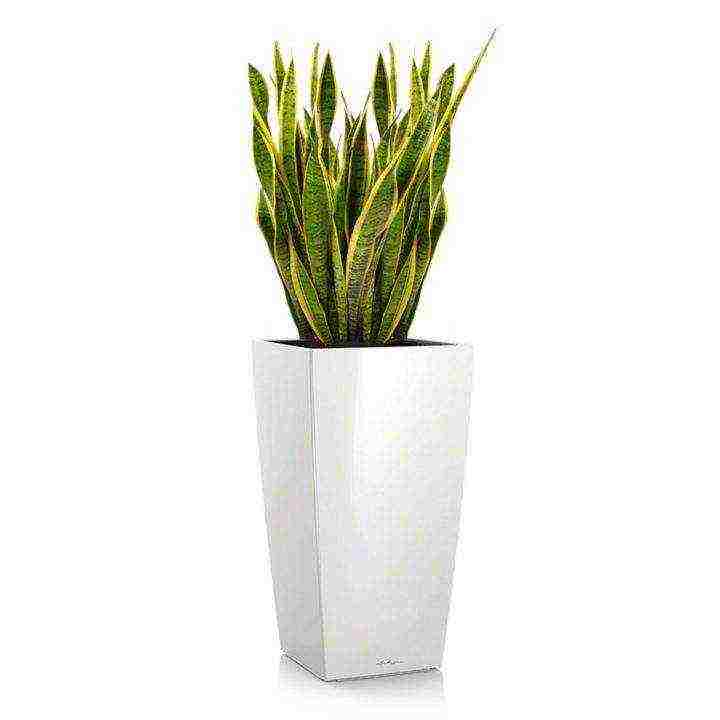
Sansivieria Laurenti
The pike tail has many beneficial properties.The flower is used against various diseases of a bacterial and viral nature. For example, it is used for inflammatory processes in the ovaries, cystitis. The plant is able to accelerate the process of tissue regeneration in case of wounds and ulcers. For otitis media, use heated fresh juice to instill the ears. In addition, the flower cleans the air from harmful components. It is able to absorb radicals that are emitted by computers, televisions and other equipment.
How to care for a pike tail
When growing a pike tail at home, you must follow a number of rules. They are as follows:
- Air temperature... The plant is not capricious, so it is not demanding to maintain only a certain temperature. The flower can grow in any climatic conditions. It is best if in summer the temperature is within the range of + 18 ... + 25 ° C. In winter, it should be about + 15 ... + 18 ° C. Too low a temperature is not suitable for such a plant.
- Lighting... In nature, the sansevier flower grows in bright light, but it must necessarily be diffused. The only exceptions are variegated varieties, which require more careful care in terms of lighting. The flower can be placed on a windowsill on the west or east side of the house. If the place is too dark, then the growth and development of the plant stops. So it is very important to find the right place so as not to harm the flower. In the warm season, you can put a container with a plant on a loggia or balcony (so that there is fresh air and enough light, but also protection from precipitation and excessively bright sun).
- Watering... He should be moderate. With active growth and development, more water is required for the pike tail, but watering is necessary only after the substrate in the container dries out. It is recommended to reduce watering in winter. It is very important to take into account the air temperature and humidity so that various fungal and other diseases do not appear due to dampness. Sansevieria is one of those plants for which it is better not to add water than to overflow. The pike tail does not need to be sprayed. For hygiene purposes, you can wipe the leaves with a damp cotton cloth to remove dust and debris. Sansevieria is a drought-resistant plant, but a prolonged lack of water can lead to the fact that the foliage begins to die off.
- Top dressingbut. It is recommended to use those fertilizers that are suitable for plants of decorative deciduous and cactus type. They contain less nitrogenous compounds than other substances. Nitrogen can lead to decay of the root system of the flower, so it is very important to choose those complex fertilizers that contain a moderate amount of such a component.
- Soil composition... The pike tail is unassuming in relation to the substrate, but it is best to choose the right one. The flower prefers a mixed composition. It is recommended to mix one part of the sifted sand with leafy soil. Then add 5 more pieces of turf-type soil. It is recommended to bake the substrate in the oven to disinfect it.
A pike tail is a flower, care, the reproduction of which does not require much effort and special skills from its owner. It is enough just to comply with all of the above requirements. Otherwise, the likelihood of the appearance of various pests and diseases in sansevieria increases. It is illiterate care that is the main reason, or rather, improper watering. Because of this, the root system begins to rot, the foliage turns yellow, and the flower simply dies over time. It is necessary to get it out of the pot, carefully cut off all rotten roots, and then leave it for a week to dry out the rest. It is recommended to treat the cut sites on the roots with preparations with antifungal properties.
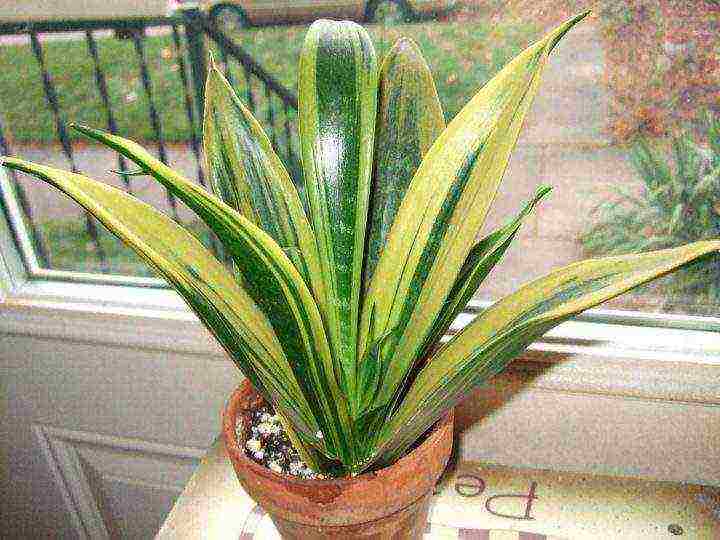
Pike tail in a pot
As for pests, thrips is one of the most common.Its appearance can be easily identified by the light spots that form on the leaves. On the reverse side, the parasite makes clutches, so there will be many larvae. Gradually, the leaves acquire a brownish-silvery hue. To destroy such a parasite, it is necessary to spray the houseplant with solutions with insecticides. For example, Fitoverm, Inta-vir and Decis are suitable.
Another common pest is the mealybug. It damages leaf sockets and feeds on their juices. Because of this, the peduncles and leaves begin to deform, turn yellow, and then quickly die. To eliminate such a parasite, you will have to pick it up by hand, and then wipe the leaves with a wet rag. If the infection is already excessive, then it is recommended to use karbofos. The same applies to the root scale.
Reproduction and transplantation
At home, reproduction can be carried out in several ways:
- through the division of the root system;
- through the shoots that are located on the sides;
- through parts of the leaves.
It is best to reproduce through the roots in the spring. It is necessary to divide the plant so that each of the parts has points of growth. The root system must be cut with a very sharp knife. Then the separated parts must be transplanted into sand and watered frequently. As soon as the first roots appear, you can transplant the plant into separate containers with a substrate. The transfer method is used.
Reproduction through shoots resembles the first method. Gradually, as the mother plant grows and develops, shoots appear on the sides. This is how sansevieria of all varieties multiplies, so there will be no difficulties. It is enough only to then deposit the side part into a new container.
Many growers prefer this propagation method, which uses only leaves. Only already matured plates are used. They must be large enough. A sharp blade is supposed to cut the sheet into several parts. The length of each should be about 5 cm. Then you need to place them in the sand, water them periodically. Be sure to cover the container with cling film or glass to create a greenhouse effect. After about 1.5 months, the leaves will take root.
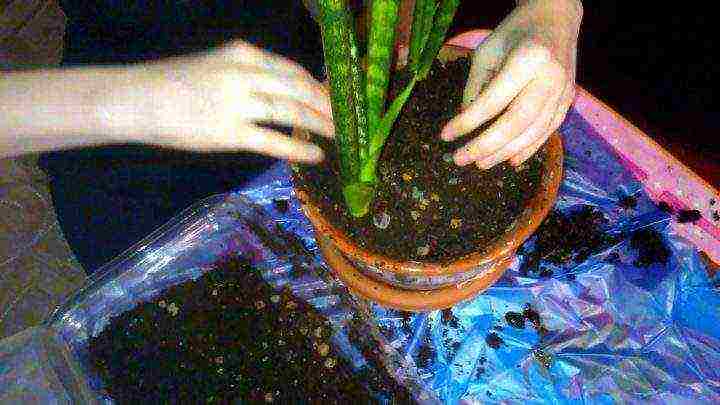
Plant propagation
It is imperative to know how to transplant a flower correctly. it is best done during the growing season, that is, in the spring or summer. It is necessary to pick up a wide pot, but at the same time it should be shallow. Flowers that are located in containers made of stone or ceramics will look very beautiful. The transplant must be carried out as the plant grows. In addition, the flower has "children", which also periodically have to be deposited in new containers. As soon as the roots completely fill the entire pot, it is necessary to select a new container. Moreover, it should be several centimeters larger in diameter than the previous container.
Before transplanting a pike tail flower, you need to pick up a pot and substrate. Drainage is supposed to be poured into the bottom. It can be pebbles, broken brick, stones, expanded clay, etc. The thickness of the drainage layer should be about 2 cm. Then it is necessary to fill up the soil on a third of the container. After that, together with a large earthy clod, transfer the mother plant to a new container. Make sure that the roots are not damaged, you need to fill in a new substrate on the sides. Sprinkle them on top too. Monitor the level of the ground so that it does not cover the foliage too much. Press down the soil a little. Water the flower thoroughly, this will help it adapt faster.
Adult flowers require pruning, as the leaves on the sides gradually dry out. If you periodically cut the foliage, which begins to turn yellow, correctly, the plant will delight the eye with a beautiful appearance.
Conclusion
If sansevieria is chosen, home care will be simple.It is only necessary to fulfill all the conditions, and then the flower will delight with a beautiful appearance. There are several varieties of such a plant, but they all grow well at home.
sansevieria (pike tail) home care
You will learn about the indoor flower sansevieria (pike tail), about caring for and growing it at home, reproduction. Other important moments are also waiting for you, thanks to which the plant will grow and develop well in your home.
Indoor plant sansevieria (pike tail) home care 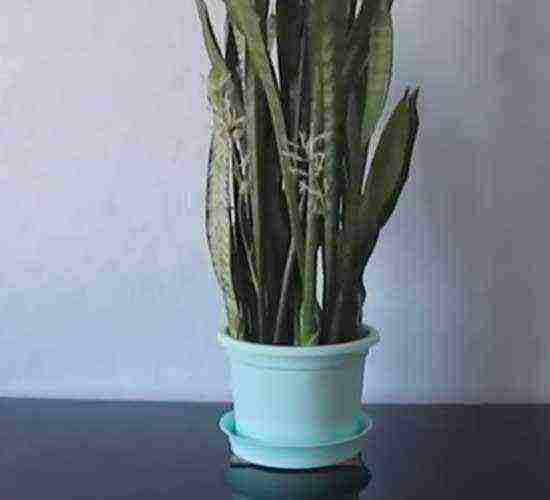 sansevieria (pike tail) home care
sansevieria (pike tail) home care
Many gardeners appreciate the showiness and beauty of sansevieria, and this is quite justified. The leaves of this plant are distinguished by a magnificent color, flowers - an exquisite aroma, and together with rapid growth, unpretentiousness and amazing vitality make sansevieria a truly unusual flower.
The popularity of this flower all over the world can be judged by the number of beautiful and unusual names that it acquired in various countries. Sansevieria is called:
- "Pike tail";
- "Mother-in-law"
- "Indian sword";
- "The tongue of the devil"
- "Leopard lily";
- "Cuckoo's tail".
The plant has juicy dark green lance-shaped leaves. Also, depending on the variety, they can differ in bright contrasting edging or have vertical or transverse stripes running through the entire sheet.
It is most advantageous for the interior to have this plant in large groups of outlets, which should be in low pots. Another good example of the location of sansevieria in the interior would be the use of plants with one rosette, which should be planted longitudinally in a long pot.
Planting sansevieri
The most optimal time for planting sansevieria is spring. Planting with seeds is practically not used, since the plant itself rarely blooms.
If the sansevieria (pike tail) still bloomed, then the seeds should be collected immediately after flowering, dried and stuck in a container with wet sand. Then it is covered and placed in a warm place.
In most cases, the plant is planted by transplanting or reproducing an already adult plant, which will be discussed below.
Location and lighting 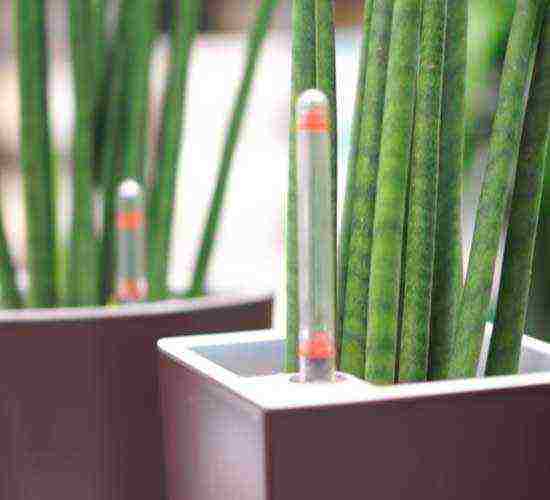 sansevieria (pike tail) home care
sansevieria (pike tail) home care
Any variety of this plant grows wild in the presence of bright sunlight. However, sansevieria will feel quite comfortable in diffused light.
Growing in low light will not be detrimental to this plant, but you should refuse to keep the plant far from the window. To obtain the most beautiful sansevieria, the leaves of which will be bright and fully developed, the plant should be given the maximum amount of light, incl. and sunny. Sansevieria (pike tail) will need shading only on too hot days, and then if it is located on the south window.
As for variegated varieties, they have certain differences regarding lighting. With an increase in the proportion of yellow in the color of the leaves of a plant, the amount of light falling on it should be reduced. Otherwise, variegated leaves can quickly turn green. But you should not allow a lack of illumination, because in this case, the development of the plant will slow down. This means that such varieties should be located in some intermediate position relative to the windows. In no case should direct sunlight fall on the plant, as this can lead to burns.
Pot size
The most suitable pot for a plant will be a shallow one, which is explained by the plant's dislike for a large volume of soil due to its superficial root system.
At the bottom of the pot, it is imperative to equip high-quality drainage.
The soil 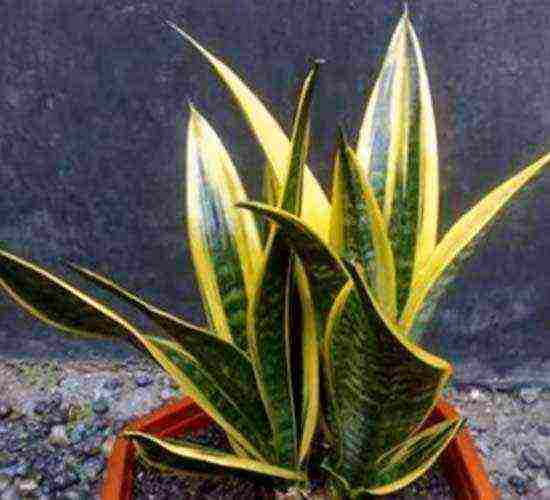 sansevieria (pike tail) home care
sansevieria (pike tail) home care
Sansevieria (pike tail) needs light soil, which will be poorly nutritious, and also dry out quite quickly. The best option would be to use specialized earthen mixtures. Independent soil formation is also allowed. To do this, you need to take equal parts of sand, turf and leafy land. However, before planting in self-prepared soil, it must be calcined in the oven or steamed.
Transfer
This plant needs to be transplanted depending on its growth. While the plant is quite young, it can be transplanted annually, with maturation, its frequency decreases to 2-3 years (when the old pot becomes cramped).
The width of the new pot should be 1.5-2 cm wider than the previous one.
Fertilizers and feeding
During the period of active growth (May-September), the plant should be fed twice a month. Throughout the rest of the period, monthly feeding will be enough. But it is worth remembering that if the plant hibernates at a sufficiently cool temperature, it is better to refuse feeding altogether.
The most effective feeding option is fertilizer intended for cacti and other succulents. In their absence, you can use a universal mineral fertilizer.
In the case of variegated varieties, fertilizers should be abandoned, which contain an increased amount of nitrogen. The fact is that nitrogen contributes to the production of chlorophyll, therefore, the leaves of the plant will turn from variegated to green. The most optimal ratio of nitrogen, phosphorus and potassium is 3: 6: 8.
In the case of variegated species, feeding must be completely abandoned, since they can negatively affect the decorative effect of the leaves.
Watering 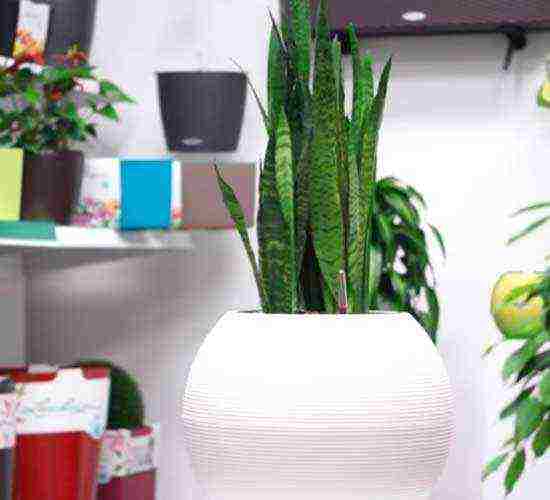 sansevieria (pike tail) home care
sansevieria (pike tail) home care
This plant is a succulent, that is, it is drought-resistant. This means that its watering should be moderate, and each subsequent watering should be carried out only after the soil is completely dry. Sansevieria is able to tolerate the absence of moisture quite easily for a long period of time.
When watering the plant, you must avoid getting water into the outlet, as this can lead to the death of the entire flower.
If a low temperature is set in the room where the plant is stored, then the frequency of its watering must be reduced. Also, a reduction in the frequency of watering is necessary in cases where the plant is in the shade.
As for spraying, sansevieria does not need it, but sometimes it is still necessary to use a rag or a special broom to clean the leaves from dust that has fallen on them.
Temperature
The plant cannot be called particularly demanding on the ambient temperature. It experiences the greatest comfort if in the daytime the temperature is in the range of 21-28 degrees Celsius, and at night - 16-20 degrees. At the same time, the plant can tolerate higher temperatures, as well as short-term drops in ambient temperature, even up to +5 degrees Celsius.
It is important to remember that in cases of prolonged stay of sansevieria in a room with a low temperature (for example, in office crossings in winter), then a significant reduction in its watering is required.
Humidity 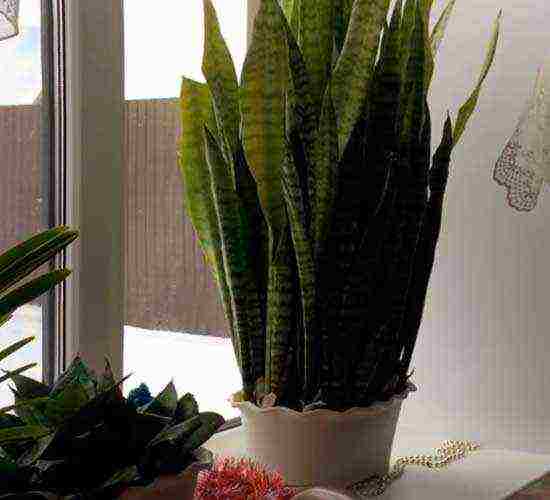 sansevieria (pike tail) home care
sansevieria (pike tail) home care
This plant is also distinguished by its unpretentiousness in terms of air humidity.Even in conditions of excessively dry air, sansevieria will not experience serious problems, so it does not need to be sprayed.
The only thing that should be abandoned by keeping the plant in conditions of excessive air humidity, which will be quite destructive for it.
Pruning
This plant needs pruning only when its leaves wilt or lose their shape. In such cases, it is necessary to completely get rid of the damaged parts of the plant, without affecting the healthy leaves.
In other cases, sansevieria (pike tail) does not need pruning.
Pests and diseases
The flower can be attacked by spider mites, thrips or mealybugs. The likelihood of a complete recovery of the plant depends on how early the pest was detected.
A sign of the appearance of a spider mite will be the formation of white spots on the leaves. Also, over time, the upper part of them will begin to die off. If a lesion is detected at an early stage, it is necessary to wipe the leaves every day using a soap solution. In the most advanced cases, you will have to resort to processing with Aktellik.
It is also quite simple to determine the damage to the plant by thrips. Light dots and a gray sheen appear on the leaves. You can get rid of this only by spraying with insecticides.
A characteristic sign of a mealybug lesion of sansevieria is a white bloom that forms on the leaves. Over time, their deformation occurs, they turn yellow and fade. Methods of dealing with such a pest are similar to a spider mite - soap solution and Actellik.
It is important to remember that, despite the unpretentiousness of sansevieria, for its rapid growth and proper development, it is necessary to carefully monitor it. If yellowing or lethargy of the leaves is detected, it is necessary to determine the cause of this as soon as possible and start fighting. The sooner this is done, the better the chances of a complete recovery of the plant.
Bloom 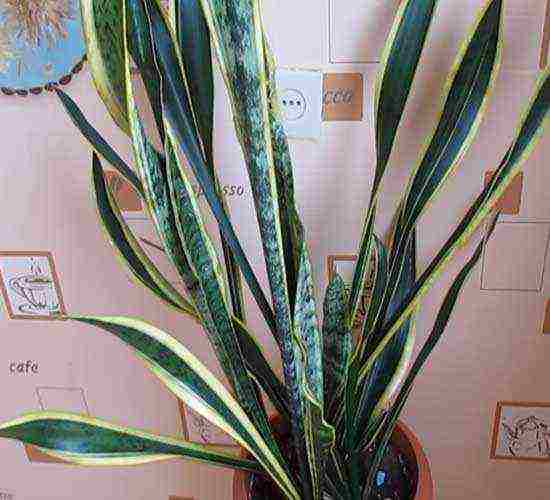 sansevieria (pike tail) home care
sansevieria (pike tail) home care
The flowering of home-grown sansevieria is a possible, but rather rare process. Moreover, it does not depend on the quality of plant care.
The white flowers of this plant bloom in the late afternoon, and are distinguished by the presence of white stamens, as well as a pleasant, but rather pungent, smell. All flowers collected in a brush are located on an arrow, the length of which can reach 15-20 cm. In total, there may be several such arrows on a plant.
Reproduction
Reproduction of sansevieria can occur using leaf cuttings or dividing the rhizome.
For propagation by leaf cuttings, you need to take a healthy leaf of the plant, cut it crosswise into small pieces of 4-6 cm using a thin blade. The most suitable for transplantation are leaves that are in a rosette that has already bloomed and no longer produces new leaves.
After that, it is recommended to dry the cuttings for several hours, then treat them with Kornevin and deepen them literally a couple of centimeters into the sand or peat-sand mixture. It is extremely important not to confuse the top and bottom of the cutting when deepening. If the plant is watered moderately, and also under the condition of exposure to bright, diffused light, the first shoots can be expected after 45 days.
Reproduction by dividing the rhizome involves cutting the rhizome during planting so that each part of the root has its own growth point.
Having divided the plant, their roots must be treated with coal, and then planted in separate pots filled with a peat-sand mixture.
If you provide the plant with moderate watering, then after a while young shoots will form on it, and then new sockets.
Dormant period  sansevieria (pike tail) home care
sansevieria (pike tail) home care
Sansevieria (pike tail) differs in that it practically does not have a pronounced rest period. However, during the autumn-winter period, it is recommended that the indoor air temperature does not drop below 14-16 degrees Celsius, the plant receives a sufficient amount of light. In addition, it is recommended to limit watering and completely abandon the use of the subcortex.
Poisonousness and useful properties
The high vitality of the "pike tail" is ensured due to the fact that it has many biologically active substances that have been used by mankind for a long time. With the help of sansevieria, treatment for many diseases is carried out. On the basis of this plant, drugs are made that are used in the treatment of otitis media, cystitis, sore throat. The sap of this magnificent flower is used to accelerate the healing of skin diseases, wounds and ulcers.
However, the use of sansevieria in traditional medicine should be extremely careful. The fact is that the leaves of this plant differ in the content of saponins. These are poisonous substances, the usefulness of which is manifested only after careful processing. It is the processed saponins that are the basis of some medicines made from sansevieria.
In addition, the presence of this plant in the room allows you to get rid of harmful radiation, makes the air cleaner, and also protects the inhabitants from colds.
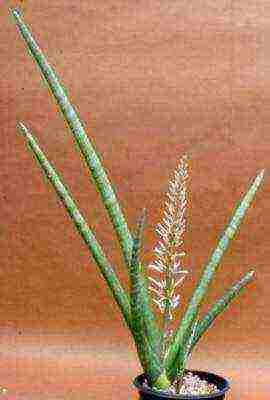
The long sharp leaf - "tongue" of sansevieria gave reason to compare it with a stinging mother-in-law, and the striped green color - with a pike's tail.
By itself sansevieria, growing in nature on dry, rocky soils of the tropics of Africa, India and America, due to its endurance and unpretentiousness, has a well-deserved reputation for being an "unkillable" plant.
Even completely devoid of soil, just in a vessel with water, it persists for a long time and even grows.
but increased durability sansevieria is not a reason to deprive it of a convenient container and suitable soil.
…
Landing capacity
The root system of the “mother-in-law's tongue” develops slowly and is located shallowly.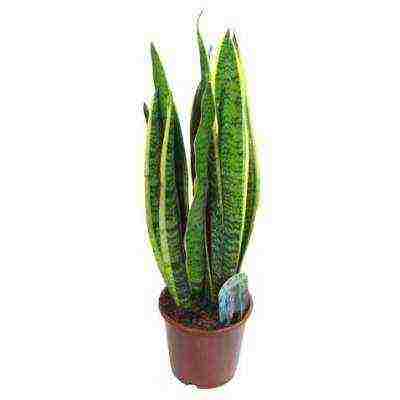
Therefore, the container for planting must be chosen so that it is wide but not deep and the size corresponded to the size of the plant.
Too large planting capacity of sansevieria will be difficult to master. Pots for mother-in-law's tongue are chosen from the calculation: the height is half the diameter - for low varieties. For medium-sized and tall specimens, the height of the container may be equal to its diameter.
In addition, the bottom of the container must have drain holes of sufficient size to ensure efficient drainage of excess moisture.
The material of the optimal planting capacity is porous, which ensures the evaporation of excess moisture and respiration of the roots. Best to choose ceramics without continuous glaze.
Soil composition
For the "pike tail", it is better to choose the soil moderately fertile, loose, slightly acidic.
Suitable from ready-made soils soil mix for cacti and succulents, and for self-production - one of the following compositions:
- two parts of leafy land, half of humus, one part of sod land, peat and sand;
- one part of sod, one part of leafy land, two parts of coarse sand;
- three parts of sod land, one each - peat and sand.
You can also add to the main varieties of land for sansevieria perlite, vermiculite, brick chips, pieces of charcoal and a small amount of bone meal.
Sometimes sansevieria is planted in compositions of ampel and ground cover plants. In this case, in order for a not too intensively growing "pike tail" to compete with more aggressive species, a nutritious substrate of the following composition is suitable for it: three parts of sod land and one part of peat, coarse sand and compost.
Landing

When planting a pike-tail flower, you should definitely take care of good drainage: expanded clay, brick fight with pieces of charcoal, or small pebbles should be laid on the bottom of the planting tank and filled up to a third of its volume (especially a thick drainage layer is needed for young plants).
You need to plant sansevieria together with a clod of earth, braided roots so that the not very powerful root system of the succulent is less injured.
Transfer
Young "Pike tails" are transplanted annually in spring, in March-April. Mature specimens need rarer ones, every two to three years, spring "relocations".
The signal for transplanting sansevieria is full weave of the earth root system.
Despite this, the next container for planting is chosen only slightly larger than the previous one - the roots of the "pike tail" grow slowly and pathogenic processes can take place in the soil "untapped" by the plant.
As a rule, rhizomes with new, young shoots grow well in "mother-in-law's tongues" under more or less suitable conditions of keeping.
Such rhizomes seatedseparating the side shoots. The shoot on which there is at least one growth bud can become an independent plant in a separate container.
Thus, to transplant a pike tail, the overgrown rhizome is cut, the cut sites are treated with crushed charcoal or fungicide and planted in containers corresponding to the size of the divided parts.
At the same time, each container is provided with a sufficient drainage layer and suitable soil.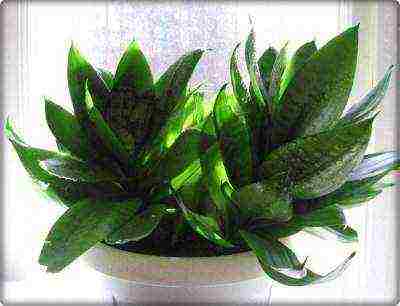
An extremely hardy inhabitant of our apartments and offices, sansevieria - "pike tail" and "mother-in-law's tongue" - has every right not to survive, but to live fully; she readily responds to even minimal care.
Correctly and timely transplanted sansevieria develops well, gives abundant shoots, blooms - and, according to the NASA list, actively absorbs such toxic atmospheric impurities as nitrogen oxide and formaldehyde.
Photo of sansevieria
More photos of "mother-in-law" see below:
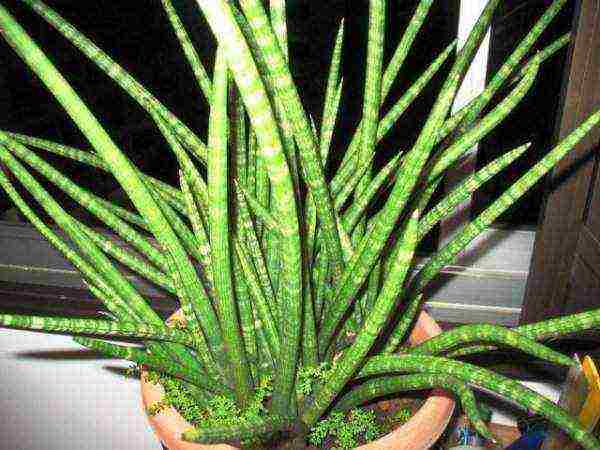
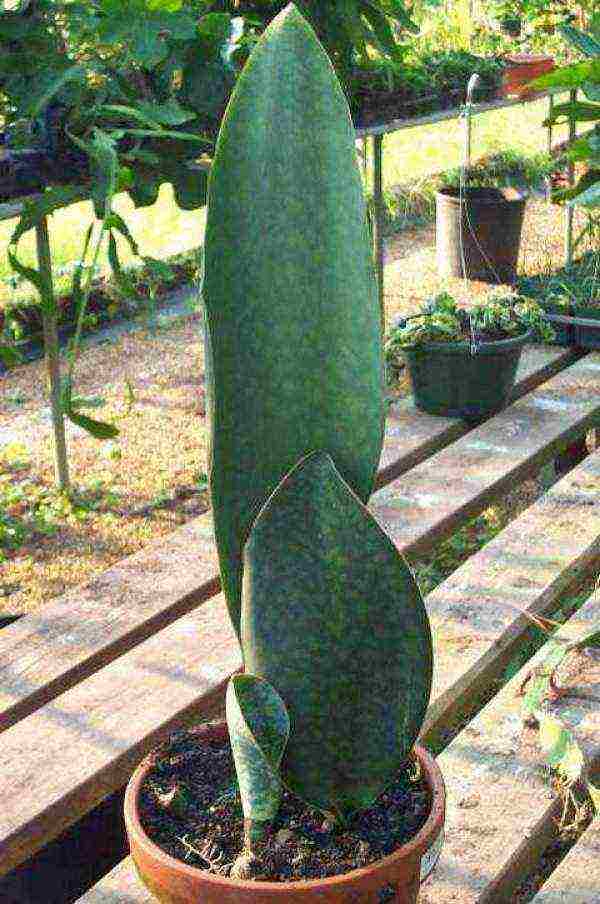
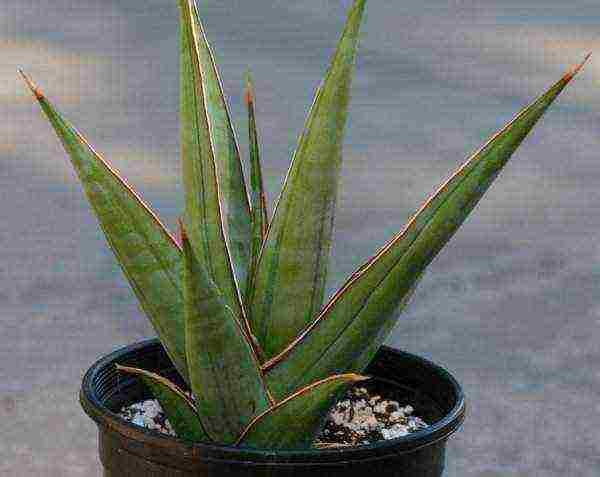
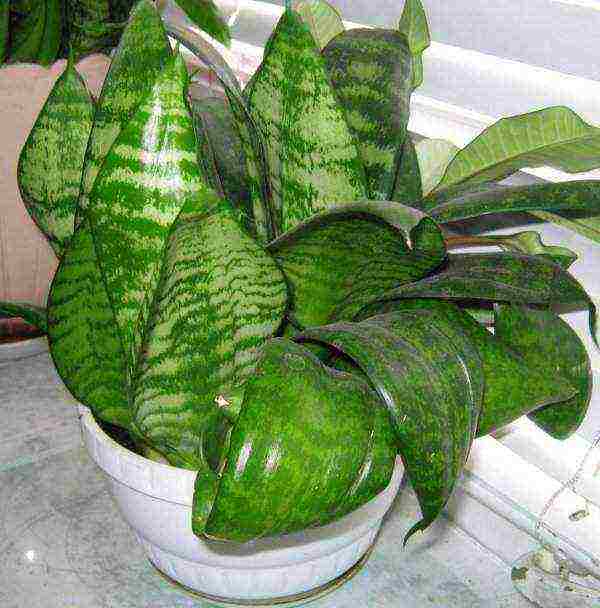
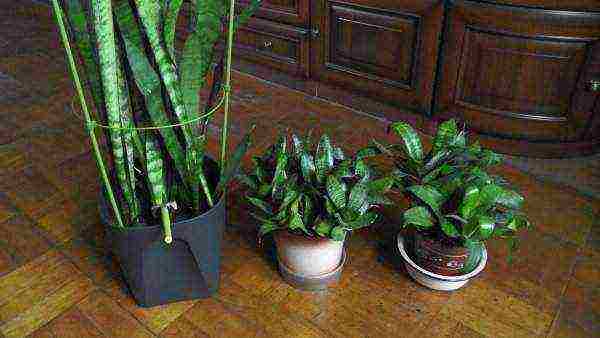
Useful video
An informative video about caring for sansevieria is presented below:
For those who have difficulty growing and breeding indoor plants, unpretentious flowers are best suited. This is exactly what sansevieria, or "Pike tail" is. Caring for it at home does not cause any problems at all.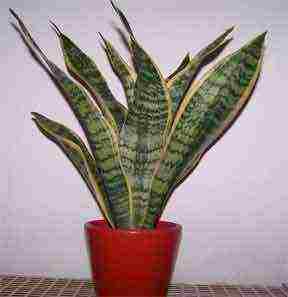
Description of the plant
Sansevieria is a stemless evergreen plant that belongs to the agave family. These flowers ("Pike tail" - their popular name) have xiphoid dark green leaves. They grow from a rhizome located underground and form a rosette.
Sansevieria leaves have an interesting color - on a dark green background there are lighter strokes, framed by a bright gold border. The dense pulp of the aerial part of the plant accumulates moisture, and the layer of wax coating does not allow it to evaporate.
It is for the leaves of an interesting color that the Pike Tail is valued. Care and care allow, in addition to gorgeous greenery, to achieve flowering from the plant. Despite the fact that the flowers of sansevieria are small and inconspicuous, and they open only closer to night, they are very fragrant. The tart vanilla scent will charm any grower.
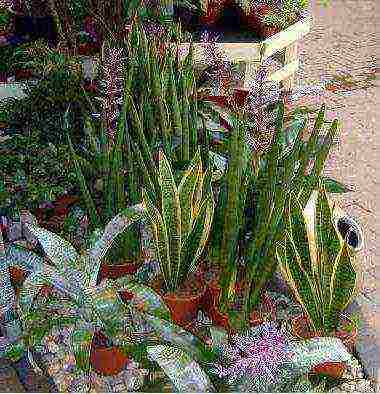 Pike tail has practical applications. In India, its leaves have long been used with success in the manufacture of ropes, cords and rough fabrics. Sansevieria leaves juice helps relieve ear pain, and juice dressings heal ulcers. In the room where this flower stands, the air practically does not contain harmful fumes from furniture and plastics.
Pike tail has practical applications. In India, its leaves have long been used with success in the manufacture of ropes, cords and rough fabrics. Sansevieria leaves juice helps relieve ear pain, and juice dressings heal ulcers. In the room where this flower stands, the air practically does not contain harmful fumes from furniture and plastics.
Rules for caring for the "Pike tail" flower
Caring for this plant at home is not difficult. It is very difficult to ruin it. Sansevieria feels great both on the shady side of the apartment and on the sunny side, easily tolerates drafts, dry air and drying out of the soil.However, "Pike Tail" is bad for excessive moisture.
Sansevieria is not too demanding on the temperature regime. It feels great in both warm and cool rooms. It is best if in summer the air temperature in the room where the "Pike Tail" grows will be within + 18-25 degrees, and in winter - not lower than +14.
It is also important to observe the watering regime: excess moisture can lead to decay of the leaves, and its lack - to the loss of elasticity of the leaves of the "Pike tail" flower. Caring for it at home is not difficult, it is important to remember that for sansevieria it is necessary that the earthen lump dry out through and through between waterings. Responsive "Pike tail" and wiping the leaves with a wet cloth.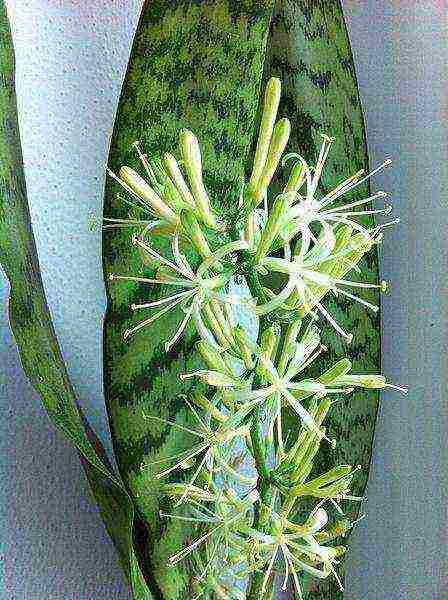
Transplant the flower as needed when the roots begin to protrude from the ground. The pot should be chosen wide, but not high, since the roots of this flower grow in width. It is important to place enough drainage at the bottom.
Sansevieria can be propagated in two ways - by dividing the rhizome or by rooting a leaf. In the first case, in the spring, when transplanting, a part of the plant that has a growth point is cut off with a sharp knife. After that, the "Pike Tail" is planted in sandy soil until it takes root. When choosing the second option, an old leaf is cut off, cut into pieces of 4-5 cm in size. Such petioles are planted in shallow grooves, and after rooting, in a permanent place in pots.
I would like to note that for the preparation of chic flower arrangements, flower growers very often use the "Pike tail". Home care for such a group of plants is usually very simple, since unpretentious plants, for example, cacti, are most popular as partners of sansevieria.
